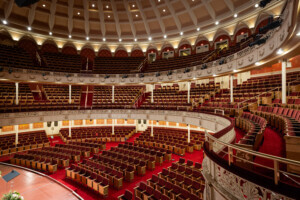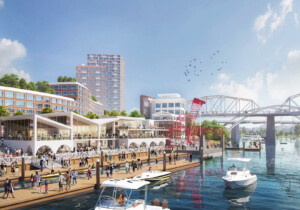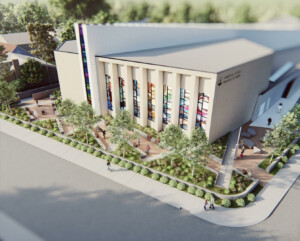Last week, Pittsburgh Mayor Luke Ravenstahl unveiled a plan to resuscitate 2,000 acres of brownfield property alongside the Allegheny River. The report, the Allegheny Riverfront Vision Plan, follows a two-year study headed up by Perkins Eastman. Much of the planning sprung from meetings with the resident and business communities, and aims to connect neighborhoods to the river for the first time. Cities throughout the country continue to reclaim their rivers, but Pittsburgh’s situation is unique.
“The neighborhoods were built to serve industry not the river,” said Stephen Quick, a principal at Perkins Eastman. “You don’t even see the river from the communities. This was not Savannah.”
While much of Pittsburgh maintains waterfront access, Quick said the city did not have a vision plan for areas upriver from Downtown. The new plan encompasses five neighborhoods that face the river, from Downtown to Highland Park. But the neighborhoods sit further inland, as industry preferred the flat riverside land for factories and the waterfront access for hauling and dumping. Street grids and sidewalks stop at the factory door. For generations of Pittsburghers, the river was a facility, in more ways than one.
In addition to serving as an industrial transitway, the river was an integral part of the city’s sewers system. Today, Pittsburgh employs a Combined Sewer Outlet system to handle both sanitary and rainwater runoff. Overflow spills into the Allegheny. The design team knew the system could handle the sanitary use, so the recommendations focused on employing pervious surfaces, creating green streets and planting brownfields and alleyways to absorb runoff. It’s a method that has gained traction in policy and planning elsewhere. Park departments in New York and Philadelphia both released similar documents over the past three months.
The Pittsburgh plan has already attracted the attention of the Federal government, which awarded the city’s Urban Redevelopment Authority $1.5 million in TIGER II funds to further study transforming a freight rail bed into a “rail-with-trail green boulevard”. The line will become the green spine connecting the five neighborhoods along the river.
Culturally, however, it may take time for a public that has never really thought of its riverfront as a playground. “We’ve begun to get good access by putting in trails that are very close to the river, but there’s still a lot of industry on the edge,” said Quick. “It’s a real cultural shift.”










